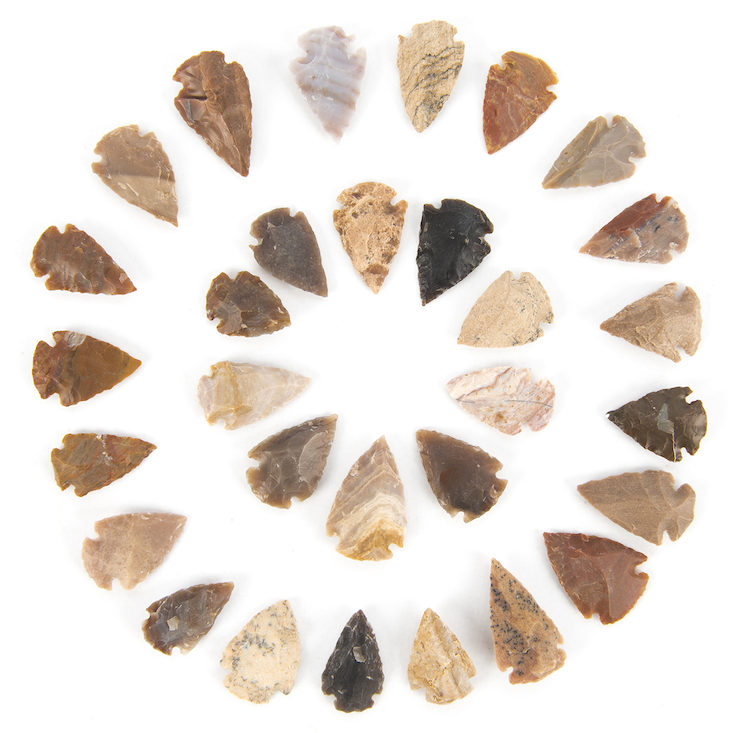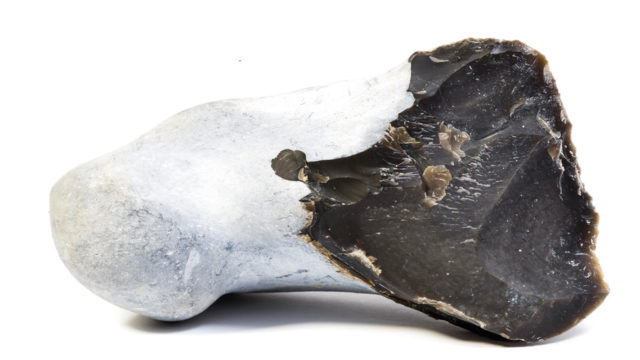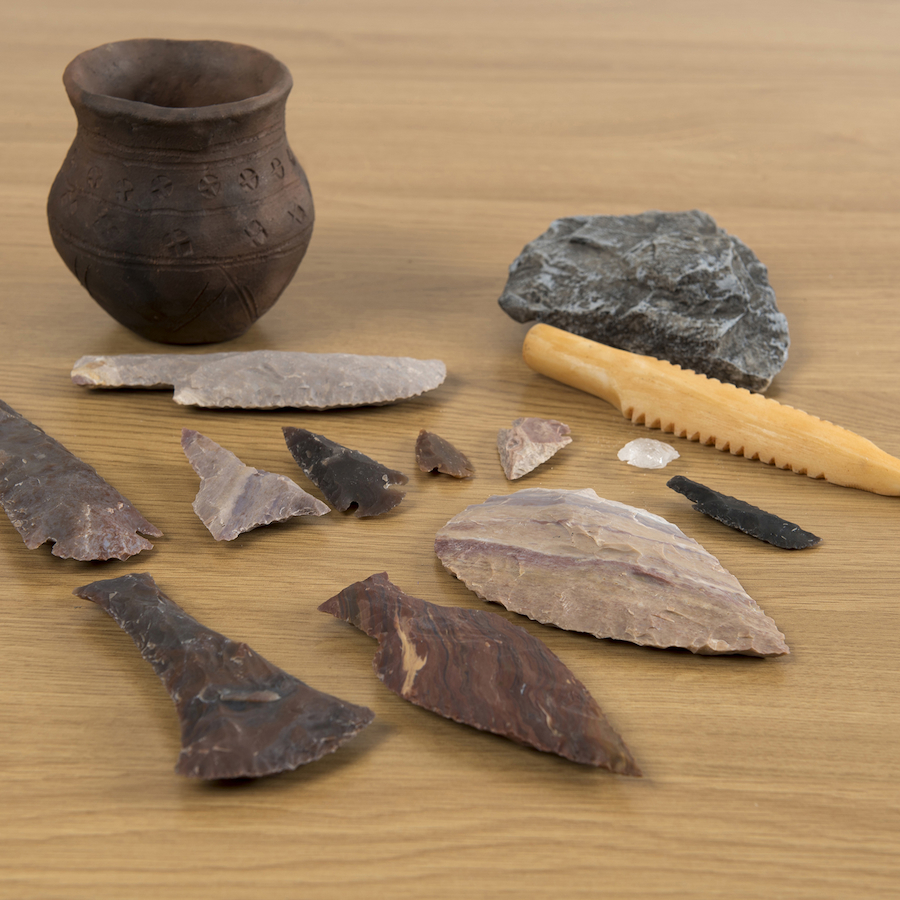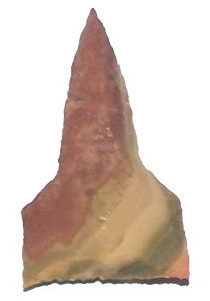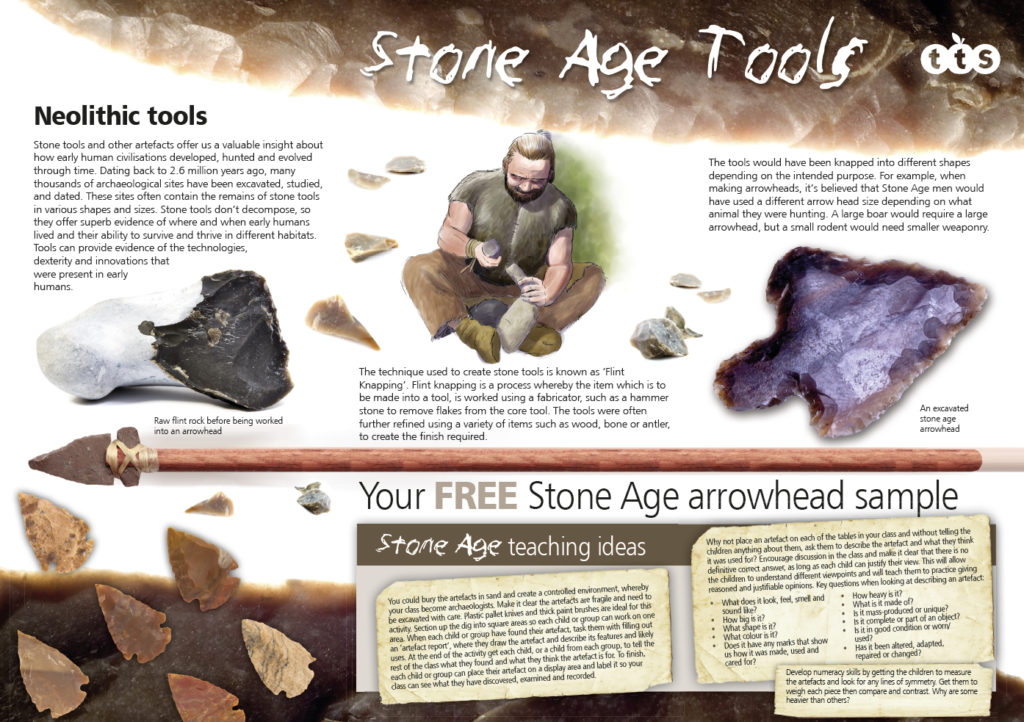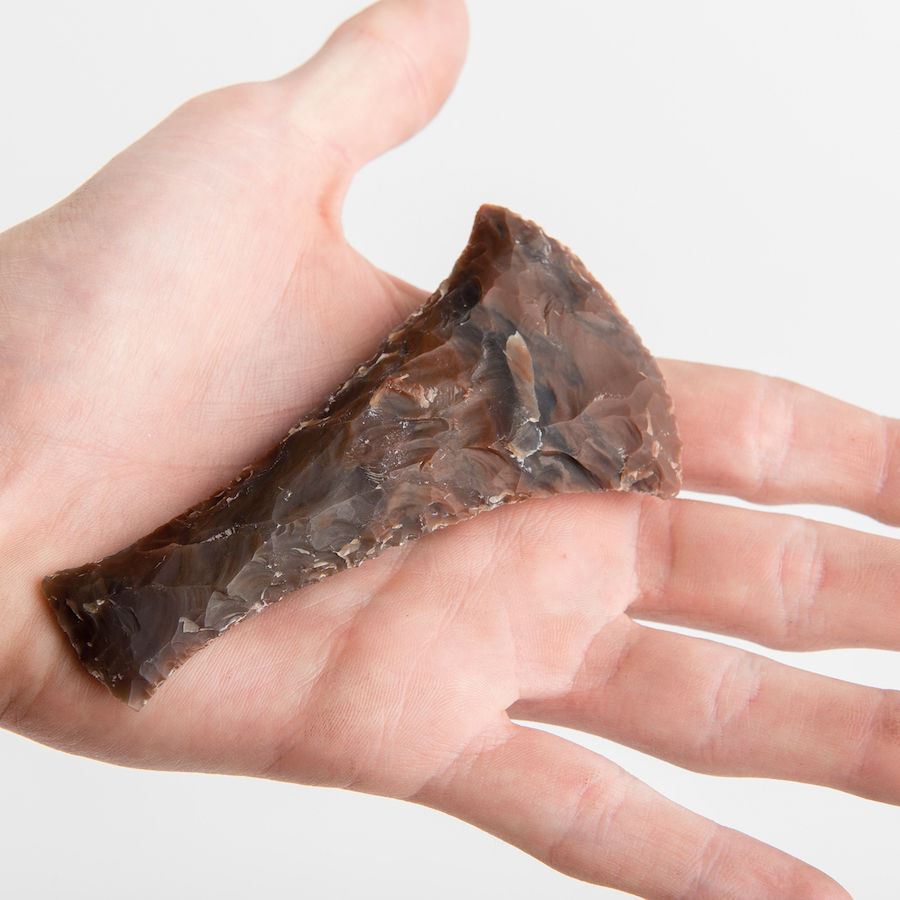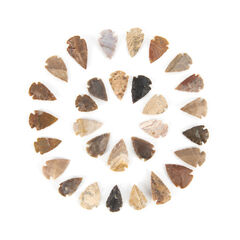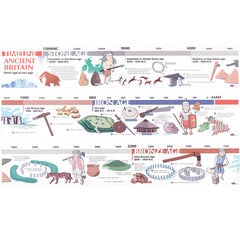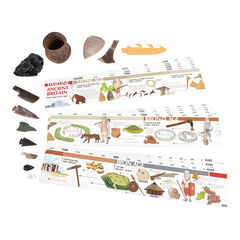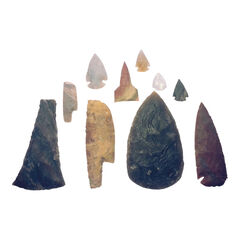Dating back to 2.6 million years ago, many thousands of archaeological sites have been excavated, studied, and dated. These sites often contain the remains of stone tools in various shapes and sizes. Stone tools don’t decompose, so they offer superb evidence of where and when early humans lived and their ability to survive and thrive in different habitats. Tools can provide evidence of the technologies, dexterity and innovations that were present in early humans.
The technique used to create Stone tools is known as Flint Knapping. Flint knapping is a process whereby the item which is to be made into a tool, is worked using a fabricator, such as a hammer stone to remove flakes from the core tool. The tools were often further refined using a variety of items such as wood, bone or antler, to create the finish required.
The tools would have been knapped into different shapes depending on the intended purpose. For example, when making arrowheads, it’s believed that Stone Age men would have used a different arrowhead size depending on what animal they were hunting. A large boar would require a large arrowhead, but a small rodent would need smaller weaponry.
Large and Small Neolithic Knives
The large and small Mesolithic knives in the classpack above are based on knives found dating back 6,000 years, during the Mesolithic era. The large knife would have likely been used to cut up large pieces of meat for cooking, or for hacking at undergrowth for making shelter. The smaller knife would likely have been used for more intricate work, such as needlework or early clothes tailoring. The large knife may have been mounted within a large wooden handle for ease of use, however, the wood would have decayed long ago, so it is impossible to say for sure.
Biface
This tool is called a biface because it has been flaked on both faces of the rock. It is made from quartzite rock, which is hard and durable. A tool very similar to this was found at Charlie Lake cave (British Columbia, Canada) and dates back to around 10,500 years ago. This type of tool is highly versatile and could have been used for chopping, skinning animals, or cutting and crushing foods for preparation and many other tasks.
Stone Borer/Drill
Borers were small pieces of flint made into small stone tools for piercing holes. It is believed from their size and shape that they would have been used mostly for intricate work, making holes in clothing and footwear. The example in this pack has been shaped to demonstrate the sharpness and effectiveness of such a tool. In the UK, evidence of Stone Age borers have been found near Swaffham, Norfolk dating back to c.3,000 B.C.
Download a copy of our FREE Stone Age Tools Poster for your classroom here.
Teaching Ideas:
1) Why not place an artefact on each of the tables in your class and without telling the children anything about them, ask them to describe the artefact and what they think it was used for? Encourage discussion with the class and make it clear there is no definitive correct answer, as long as each child can justify their view. This will allow the children to understand different viewpoints and will teach them to practice giving reasoned and justifiable opinions.
Key questions when looking at describing an artefact:
- What does it look, feel, smell and sound like?
- How big is it?
- What shape is it?
- What colour is it?
- How heavy is it?
- Does it have any marks that show us how it was made, used and cared for?
- What is it made of?
- Is it mass-produced or unique?
- Is it complete or part of an object?
- Is it in good condition or worn/used?
- Has it been altered, adapted, repaired or changed?
2) Develop numeracy skills by getting the children to measure the artefacts and look for any lines of symmetry. Get them to weigh each piece then compare and contrast. Why are some heavier than others?
3) Get the children to research what the artefacts are made from. Where is this type of material found in the UK? Get the children to discuss why some types of rock would have been better for making tools than others – what properties make the type of rock used the most suitable?
4) You could bury the artefacts in sand and create a controlled environment, whereby your class become archaeologists. Make it clear the artefacts are fragile and need to be excavated with care. Plastic pallet knives and thick paint brushes are ideal for this activity. Section up the dig in to square areas so each child or group can work on one area. When each child or group have found their artefact, task them with filling out an ‘artefact report’, where they draw the artefact and describe its features and likely uses. At the end of the activity get each child, or a child from each group, to tell the rest of the class what they found and what they think the artefact is for. To finish, each child or group can place there artefact on a display area and label it so your class can see what they have discovered, examined and recorded.



